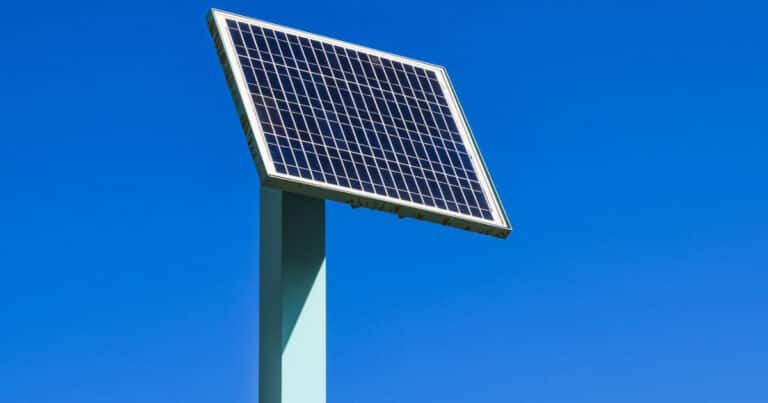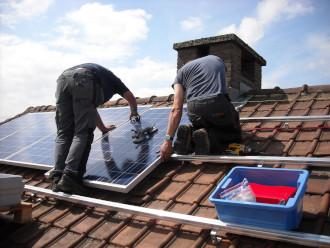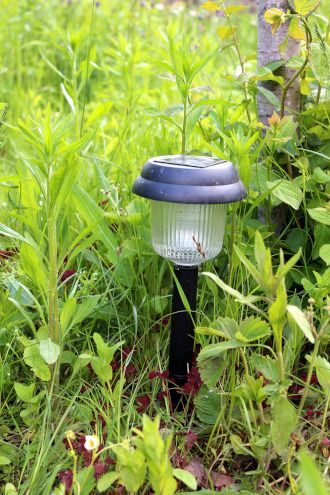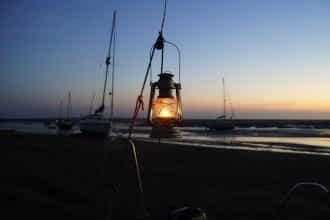What Is a Solar Lantern?
By Harry Cooper – A solar lantern is a light powered by solar batteries. By being outdoors in the sun during the day, the solar panels on the lantern charge its battery, and by night it is ready to be used as a light source.
Solar power was first discovered in France in 1834 by Edmond Becquerel. Since then, Solar powered devices have undergone many innovations, and have helped power everything from satellites to our homes.
But, even with solar being one of the most notable forms of renewable energy, it still seems a little redundant to use natural light to power artificial lights. However, solar lanterns have already proved themselves useful to many people throughout the world.
Having access to light is a commodity that many people in the developed world often take for granted. Many people don’t realize how amazing it is that solar lanterns are able to provide cheap, consistent light to people who don’t normally have light as a commodity.
How do Solar Lanterns Work?
Solar lanterns are made up of four parts: the solar panel, the battery, the control electronics, and a led light. Since there is no need to use solar lanterns during the day, they remain in an outdoor space while the sun is out and are ready to use by night.
The solar panels convert the sunlight to electricity through photovoltaic cells. These cells contain negatively charged electrons that react to the sunlight. When light hits the negatively charged electrons they become excited and enter a positively charged space in the panel. This creates an electric current that is sent to the batteries to charge them for later use.
Why Use Solar Lanterns?
The Benefits of Solar Energy
Solar lanterns are incredibly practical. But before getting into the specific benefits of solar lanterns, we can already see the benefits of solar energy in general.
The most inherent benefit of solar is the fact that it produces no greenhouse gasses whatsoever. As people transition from fossil fuels to solar, we have seen it “power more than 6 million homes each year, and resulting in annual carbon dioxide emission reductions equivalent to taking 4.4 million passenger vehicles off the road”.
Using solar panels as a power source for individual items and buildings reduces the need to get power from a centralized power grid. This is important because once localized solar powered systems are installed, the energy is completely free as long as there is enough sunlight.
Solar Lanterns Are Cheap
Solar panels provide seemingly free, endless, and clean energy. However, running an entire building on the sun can be costly.
The average cost of installing a solar panel in the US can be anywhere from $10,000-$15,000. While they will pay for themselves overtime, installing solar panels is a big investment that not everyone is willing to make.
While using the sun as a power source may be a hassle on a larger scale, using solar lanterns in select places can help people reap the benefits solar powered living without breaking the bank. Using solar lanterns for camping, lighting an outdoor space, or any other outdoor use can help people make use of the power that comes from the sunlight that shines almost everyday, everywhere in the world.
Solar Lantern Gardens
Many people have taken advantage of these cheap solar powered lights as outdoor décor for gardens. Outdoor solar lanterns are not only practical, but also decorative.
Outdoor lighting is often difficult because it requires outlets, but an outdoor solar lantern can be a great decorative way to light up a garden at night. And so, many people have turned solar lanterns into a way to combine sustainability and style.
Solar Lanterns in the Developing World
Solar lanterns can be an easy way for people to use the sun as a power source without making a big investment. However many people don’t realize that the real benefit of a solar powered lantern comes in their use in the developing world.
Many parts of the underdeveloped world lack access to many things the developed world takes for granted such as internet access, clean water, or modern medicine. But what many people don’t think of, is that many people don’t have the ability to light up the dark when need be.
Why is Light so Important?
Lighting poverty is a significant issue in today’s world. Light is an essential part of development, and many communities find it incredibly difficult to live without.
Living without light prevents kids from learning, businesses from operating, and even doctors from helping patients. Without a reliable light source, communities are strictly limited in what they can accomplish in a day.
Fortunately, many humanitarian efforts have already started trying to provide underdeveloped communities with solar lanterns. Since solar lanterns are such a cheap and renewable source of light, they are an almost perfect solution to the issue of lighting poverty.
Solar Lanterns Versus Kerosene
It may seem a little hard to believe that light poverty is such a big issue in so many places. After all, fire was one of the first things humanity invented, shouldn’t most people be able to light up the dark in some way or another?
The Health Effects of Kerosene
As it turns out, many places do have sources of light, although they are unreliable and potentially dangerous to human health. The most infamous and widespread of these unreliable light sources is kerosene lamps.
Around 1.6 billion people in the world use kerosene lamps as a primary source of lighting. These people live mainly in developing communities that have few options for lighting.
These lamps produce toxic carcinogens when burned that cause indoor air pollution. These harmful chemicals can lead to many harmful diseases, including tuberculosis, asthma, and cancer.
The Environmental Effects of Kerosene
Kerosene lamps are incredibly dangerous to human health, especially when used on a daily basis like they are in many parts of the world. But in addition to being a threat to human health, they can also contribute to climate change.
Kerosene lamps burn their fuel incredibly inefficiently. On top of that these lamps emit large amounts of black carbon. Black carbon is a part of soot, a chemical compound that absorbs light at an alarming rate. By doing this, black carbon absorbs energy and prevents it from leaving the atmosphere, contributing to climate change.
Black carbon is one of the most harmful contributors to climate change. Not only does it help warm the Earth, but it can absorb about million times more energy than typical carbon dioxide.
Solar lanterns Over Kerosene
Kerosene lamps are incredibly harmful to the planet and the people that use them. Fortunately, the implementation of solar lanterns in developing communities is helping phase them out.
Solar lanterns are powered by completely clean energy, and so they don’t emit any toxic substances that could harm the environment or human health. And so, solar lanterns are not only much cheaper than kerosene lamps because they don’t require any fuel other than being left outside in the sun, but they also eliminate any toxic emissions caused by kerosene.
Solar Lantern Success Stories
There have been many humanitarian efforts aimed at implementing solar lanterns all over the world. One such successful attempt was the SEP Lake Victoria Project. The project aimed at getting solar lamps to night fishermen at Lake Victoria in Uganda and Kenya.
Before the project, night fishermen used kerosene lamps to see by, which not only harmed them, but also the lake’s ecosystem. The lamps were not only used by the fishermen, but also by their families at home. The project aimed at providing 1,000 households with solar lanterns, but in the end it was able provide them to 3,000 households.
Another success story is the development of the Nokero lamp. The CEO of Nokero lamps, Steve Katsaros, sought to design smaller lanterns that were more powerful. In doing so, Nokero developed the most efficient solar lantern on the market today.
These lanterns are small enough to fit in a pocket, yet produce twice as much light as some of their competitors. Nokero lanterns have made their way to light impoverished communities in over 120 different countries, and as solar technologies continue to improve, better solar lanterns will become more widely available.
Solar Lanterns and Religion
Liter of Light, a Filipino-born global grassroots solar lighting movement, marked 500 years of Christianity in the Philippines by creating one of the largest images of Santo Niño de Cebu in the world out of solar lights. Liter of Light has gifted and given more than 350,000 lights to 15 countries all over the world.
In an article in Christianity Today, Brian Rants describes his work with the company Nokero (short for “No Kerosene”) selling $15 solar lamps to people around the world. Brian Rants is a graduate from Grace College with a Bible degree, and he is using his God-given talents to bring affordable lighting to those living in poverty around the world, who don’t have access to an electric grid.
Rants observes that by selling these lamps instead of just giving them away, people take better care of them. Additionally, his customers give him important feedback that helps him improve the product.
Over a million people die each year from kerosene fires. When individuals live with kerosene lamps, they experience the same health effects of smoking. According to the article above “When individuals live with kerosene lamps, they experience the same health effects of smoking 40 cigarettes a day.”
Moreover, “The average family off the electric grid spends 10% of their income on kerosene, with many spending up to 25%. When Nokero customers buy the $15 solar lamps, they recoup the purchase price in a few months—sometimes just weeks—from the fuel savings alone.”
This all goes to show that sustainability is good for companies, good for consumers and good for the planet. Solar lanterns are a great example of a sustainable solution that’s lighting the way forward for all of us.
* Featured image source








